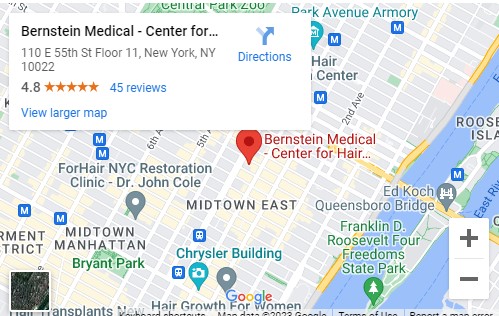by Jeff Teumer, PhD
Hair Transplant International Forum, Volume 18, Number 3, May/June 2008
Follicular cell implantation (FCI) is based on the ability of the dermal papilla (DP) cells, found at the bottom of hair follicles, to stimulate new hairs to form. DP cells can be grown and multiplied in a culture so that a very small number of cells can produce enough follicles to cover an entire bald scalp.
In order to produce new follicles, two types of cells must be present. The first is Keratinocytes, the major cell type in the hair follicle, and the second are dermal papillae cells (DP) which lie in the upper part of the dermis, just below the hair follicle. It appears that the DP cells can induce the overlying keratinocytes to form hair follicles. There are a number of proposed techniques for hair regeneration that use combinations of cells that are implanted in the skin. The two major techniques involve either transplanting dermal papillae cells by themselves into the skin or implanting them with keratinocytes. These techniques can be used with or without an associated matrix used to help orient the newly forming follicles.
Implanting Dermal Papillae Cells Alone
- Implanting DP cells by themselves into the dermis, with the hope that they will cause the overlying skin cells (keratinocytes) to be transformed from normal skin cells into hair follicles. This method is called “follicular neo-genesis” since new hair is formed where none previously existed.
- Cells of the dermal papillae are placed alongside miniaturized follicles. The transplanted cells would induce the keratinocytes of the miniaturized follicles to grow into a terminal hair. A potential advantage of this technique is that the existing miniaturized follicles already have the proper structure and orientation to produce a natural look growth.
Implanting Dermal Papillae with Keratinocytes
- A mixed suspension of cultured keratinocytes and DP cells are implanted into the skin.
- Keratinocytes and DP cells are cultured together such that full or partial hair formation takes place in a culture dish. These culture-grown hairs, or “proto-hairs,” are then implanted into the patient. The advantage of using a proto-hair is that there would be better control over the direction of hair growth because of the structural orientation of the proto-hair.
Cell Implantation using a Matrix
- A variation of the above techniques is to use a matrix to help orient the implanted cells. This could be either an artificial matrix composed of materials such Dacron or it could be a biological matrix composed of collagen or other tissue components. The matrix would act like a scaffold to help cells organize to form a follicle. If the matrix were filamentous (like a hair) it could help direct the growth of the growing follicle. A matrix could be used with dermal papillae cells alone or in combination with cultured keratinocytes.
With all of the varied approaches for FCI, the aim is to combine keratinocytes and DP cells to efficiently and reproducibly generate thousands of follicles for hair restoration. In some cases, cells are combined in vivo and all of the hair formation must take place in the body after implantation, while in others, some hair formation takes place in culture before implantation.
Posted by Robert M. Bernstein M.D. 





